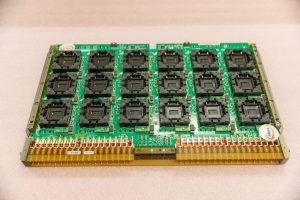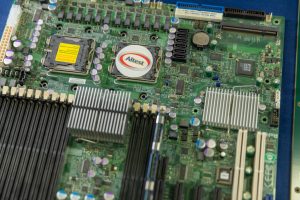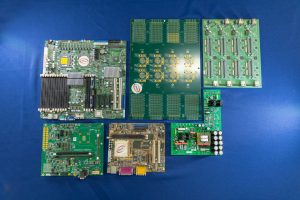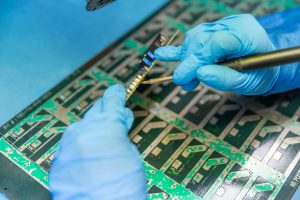In our tech-savvy world, the inner workings of our devices often go unnoticed. But behind every powerful gadget lies an intricate Printed Circuit Board (PCB) that brings it to life. Understanding how PCB board assembly impacts the performance of your electronics can transform your perspective on the gadgets you use daily. This blog will take you through the essentials of PCB assembly, its significance, and how it directly affects your electronic devices.
Why PCB Board Assembly Matters
PCB board assembly is the backbone of modern electronics. From smartphones to laptops, each device relies on a meticulously crafted PCB to function seamlessly. Without proper PCB assembly, even the most advanced components would be rendered useless. This section will break down why this process is crucial.
Proper PCB assembly ensures that all electronic components are securely connected and functioning as intended. This not only affects the performance but also the longevity of the device. A poorly assembled PCB can lead to frequent malfunctions and a shorter lifespan for the device.

The quality of PCB assembly also impacts the efficiency of the device. A well-assembled PCB ensures that signals are transmitted rapidly and without interference, allowing for faster processing and better overall performance.
The Anatomy of a PCB
To appreciate the impact of PCB board assembly, it’s essential to understand its anatomy. A PCB is made up of several layers, each with a specific role in ensuring the device functions correctly. Let’s take a closer look at these layers and their importance.
The base layer of a PCB is typically made of fiberglass, which provides structural integrity. On top of this base layer are conductive copper tracks that create the circuit pathways for electrical signals. These tracks are crucial for connecting various components on the board.
Above the copper tracks, a solder mask layer protects the copper from oxidation and prevents solder bridges. The final layer is the silkscreen, which labels the various components and provides assembly instructions.
The Role of Components in PCB Performance
Each component on a PCB plays a vital role in the overall performance of the device. From resistors to capacitors, every element must be precisely placed and securely attached. This section will explore the significance of these components and their impact on device functionality.
Resistors control the flow of current within the circuit, ensuring that each component receives the correct amount of power. Incorrect placement or faulty resistors can lead to overheating and potential damage to the device.
Capacitors store and release electrical energy, helping to stabilize voltage levels. They are critical in maintaining the smooth operation of the device, especially in high-frequency applications like smartphones and computers.
Other components, such as diodes and transistors, also play crucial roles in regulating current flow and amplifying signals. Proper placement and secure attachment of these components are essential for optimal device performance.

Surface Mount Technology (SMT) vs. Through-Hole Technology (THT)
Two primary techniques are used in PCB assembly: Surface Mount Technology (SMT) and Through-Hole Technology (THT). Each method has its advantages and is suited for different applications. This section will compare these techniques and their impact on PCB performance.
SMT involves mounting components directly onto the surface of the PCB. This method allows for smaller, more compact designs and is ideal for high-density applications like smartphones and laptops. SMT also offers better performance at high frequencies and is more resistant to vibrations.
On the other hand, THT involves inserting component leads through holes in the PCB and soldering them on the opposite side. This method provides a stronger mechanical bond and is better suited for components that require high power, such as connectors and transformers.
Both techniques have their merits, and the choice between SMT and THT depends on the specific requirements of the device being assembled. In many cases, a combination of both methods is used to achieve the best performance.

The Importance of Soldering in PCB Assembly
Soldering is a critical step in PCB assembly that involves attaching components to the board using a molten metal alloy. The quality of soldering directly affects the reliability and performance of the device. This section will highlight the importance of proper soldering techniques.
Good soldering ensures a strong electrical connection between components and the PCB. This minimizes the risk of signal loss and improves the overall efficiency of the device. Poor soldering, on the other hand, can lead to weak connections and potential failures.
Soldering also plays a role in thermal management. Properly soldered joints allow for better heat dissipation, preventing components from overheating and extending the device’s lifespan.
Automated soldering techniques, such as reflow soldering and wave soldering, are commonly used in modern PCB assembly to ensure consistent and high-quality solder joints.
Testing and Quality Assurance
Once the PCB assembly is complete, rigorous testing is essential to ensure the device functions correctly. This section will discuss the various testing methods used in PCB assembly and their importance in maintaining high standards of quality.
In-Circuit Testing (ICT) is one of the most common methods used to verify the functionality of individual components on the PCB. This involves applying test signals to specific points on the board and measuring the response to ensure everything is working as expected.
Functional Testing (FCT) goes a step further by evaluating the overall performance of the assembled PCB. This involves simulating real-world operating conditions and checking for any issues that may arise during normal use.
Automated Optical Inspection (AOI) and X-Ray Inspection are also used to detect defects in the solder joints and component placement. These non-invasive techniques allow for quick and accurate identification of potential issues.

The Impact of PCB Design on Assembly
The design of the PCB itself plays a significant role in the assembly process. A well-designed PCB can simplify assembly and improve performance, while a poorly designed one can cause numerous challenges. This section will explore the importance of good PCB design.
One of the key aspects of PCB design is the layout of the components. Proper spacing and orientation of components can reduce the risk of interference and improve signal integrity. It also makes the assembly process more straightforward and reduces the likelihood of errors.
The placement of vias and traces is another critical factor in PCB design. Vias are small holes that allow signals to pass between different layers of the PCB. Proper placement of vias and traces can enhance signal transmission and reduce the risk of crosstalk and other issues.
Design for Manufacturability (DFM) is a concept that emphasizes designing PCBs in a way that simplifies the manufacturing process. By considering factors such as component accessibility, assembly techniques, and testing requirements, designers can create PCBs that are easier to assemble and test.
Common Challenges in PCB Assembly
Despite advancements in technology, PCB assembly can still present several challenges. This section will discuss some of the common issues faced during the assembly process and how they can impact the performance of the final product.
Component misalignment is one of the most common challenges in PCB assembly. Even slight misalignments can cause issues with signal transmission and lead to poor performance. Automated assembly equipment and precise placement techniques can help mitigate this issue.
Soldering defects, such as cold joints and solder bridges, are another common challenge. These defects can result in weak connections and potential failures. Implementing strict quality control measures and using advanced soldering techniques can help minimize these defects.
Thermal management is also a critical concern in PCB assembly. Poor heat dissipation can lead to overheating and damage to components. Proper design and the use of thermal management techniques, such as heat sinks and thermal vias, can help address this issue.
Innovations in PCB Assembly
The field of PCB assembly is constantly evolving, with new technologies and techniques being developed to improve performance and reliability. This section will highlight some of the latest innovations in PCB assembly.
One of the most significant advancements in recent years is the use of flexible PCBs. Unlike traditional rigid PCBs, flexible PCBs can be bent and folded to fit into compact spaces. This makes them ideal for applications such as wearable devices and flexible displays.
Another innovation is the use of advanced materials, such as high-frequency laminates and thermal management materials. These materials offer better performance and reliability, especially in high-frequency and high-power applications.
The integration of AI and machine learning in PCB assembly is also gaining traction. AI-powered systems can optimize the placement of components, detect defects, and improve overall efficiency. This technology has the potential to revolutionize the PCB assembly process.
The Future of PCB Assembly
As technology continues to advance, the future of PCB assembly looks promising. This section will explore some of the trends and developments that are likely to shape the future of PCB assembly.
One of the key trends is the increasing use of automation in PCB assembly. Automated assembly equipment can significantly improve the speed and accuracy of the assembly process, leading to higher-quality products and reduced costs.
The rise of the Internet of Things (IoT) is also driving demand for more compact and efficient PCBs. IoT devices often require small, lightweight, and highly integrated PCBs, which presents new challenges and opportunities for PCB assembly.
Advancements in materials science and fabrication techniques are also expected to impact the future of PCB assembly. New materials and techniques can offer better performance, reliability, and cost-effectiveness, enabling the development of next-generation electronic devices.
Conclusion
Understanding how PCB board assembly impacts the performance of your electronics is crucial for anyone involved in the design, manufacturing, or use of electronic devices. From the importance of proper assembly to the latest innovations and future trends, this blog has covered the key aspects of PCB assembly.
By recognizing the significance of PCB assembly and staying informed about the latest developments, you can ensure that your electronic devices perform at their best. Whether you’re a designer, manufacturer, or end-user, the knowledge gained here will help you make informed decisions and achieve better results.
If you’re looking to learn more about PCB assembly or need assistance with your projects, our team of experts is here to help. Contact us today for personalized advice and support.
